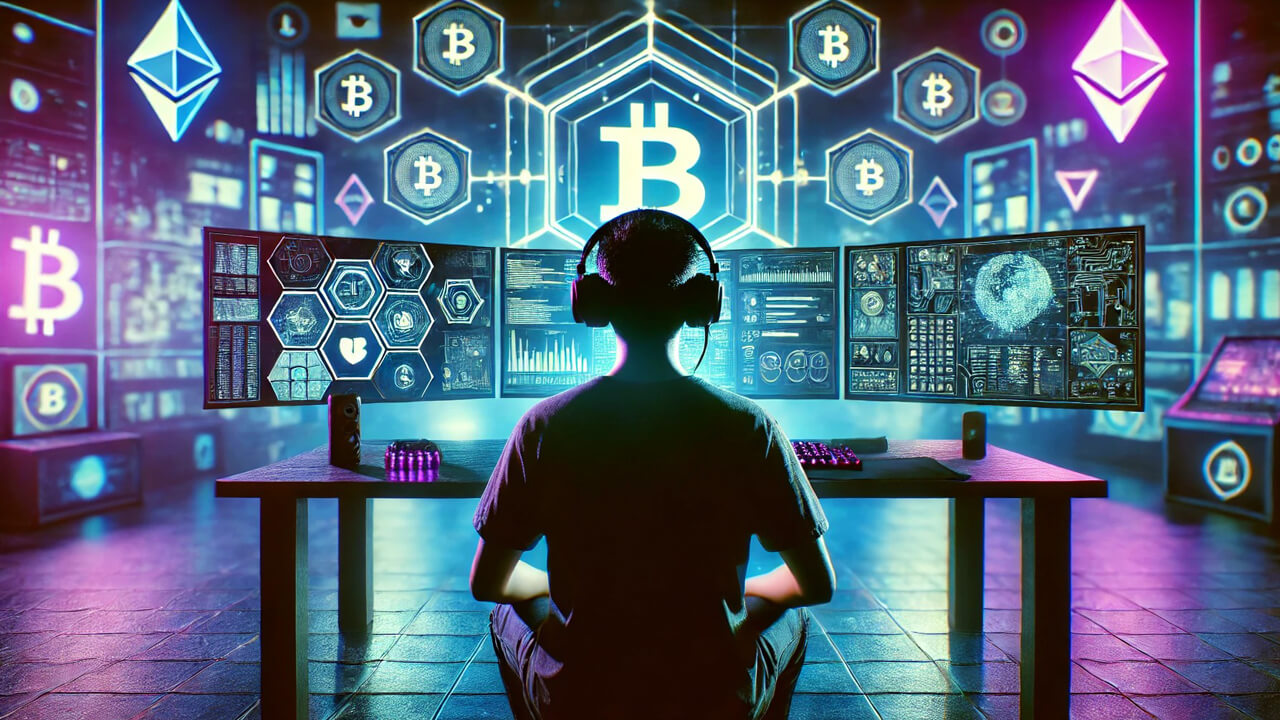
How Is Blockchain Facelifting Gaming - 9 Newest Trends
🪙Blockchain technology is transforming the gaming industry and redefining players and their interactions with game worlds. Gamers can now own digital assets and even earn money for their participation. While play-to-earn titles like Axie Infinity helped popularize these concepts a few years ago, the technology and trends keep evolving.
1. Expansion of the Play-to-Earn (P2E) Models
Early blockchain games often focused on a single in-game token as a reward. Newer projects, however, are moving toward diversified reward systems, integrating NFTs (non-fungible tokens), in-game staking, and multiple tokens to create a more balanced and sustainable economy. To avoid hyperinflation of tokens and improve longevity, some games reward skillful play rather than pure “grind.” This reduces the risk of speculative bubbles and appeals to more traditional gamers.
💎Another trend we are seeing is hybrid monetization approaches, which is a blend of free-to-play, subscription, and P2E mechanics. This provides more flexible on-ramps for players who might be crypto-curious but hesitant to buy tokens right away. At the same time, many investors scout the best crypto presale opportunities, hoping to spot the next big project early on. Grasping new coins on time potentially opens the doors to much advanced, high-level blockchain gaming in the future. That’s why investing in coins early is an important feature in blockchain-based gaming.
2. NFT Evolution And Dynamic Assets
Dynamic NFT Assets: Developers are experimenting with NFTs that can evolve. For example, a character NFT in a game might level up, change appearance, or gain new traits that are recorded on-chain.
Composable NFTs: Some projects are introducing NFTs that can be combined or “assembled” to form more powerful items or characters.
Cross-Game Interoperability: There’s growing interest in NFTs that can be transferred and used across multiple games or metaverses. While true interoperability still has technical and design challenges, several blockchain gaming studios are collaborating to make it happen.
3. Gaming DAOs And Player Governance
A trend toward gaming DAOs (Decentralized Autonomous Organizations) gives players a real say in in-game updates, asset releases, and ecosystem expansions. Governance tokens often empower participants to vote on crucial aspects of game development. Additionally, some studios have opened up development processes, letting DAO members propose new characters, storylines, or even expansions, providing collaborative game creation opportunities.
4. Layer-2 Solutions And Scalability Improvements
High gas fees and slow transaction times on major blockchains have historically deterred many gamers. Now, solutions like Polygon, Immutable X, Arbitrum, and other Layer-2 or sidechain technologies are reducing costs and improving speed. By abstracting away complex wallet mechanics, many blockchain games are making onboarding simpler similar to downloading a traditional game.
5. GameFi: Blending DeFi With Gaming
Yield Farming Meets Gaming: GameFi extends beyond just earning a native token from playtime. Players can stake tokens, provide liquidity, or participate in yield farming within the game ecosystem. This merges decentralized finance (DeFi) with gaming for potentially higher rewards.
In-Game Banking and Loans: Some blockchain titles now feature in-game banks where players can stake or lend tokens for in-game currency, items, or NFT collateral.
6. Metaverse Integration
Projects like The Sandbox Decentraland, and emerging metaverse platforms let players own “land” or real estate as NFTs. This land can then be monetized through building experiences, hosting events, or renting space to other creators.
As metaverse projects grow, we’re seeing more attempts to let users move a single avatar or identity between different virtual worlds. Blockchain-based ownership of avatar NFTs makes cross-platform customization and progression possible.
7. Esports And Streaming Integration
Tokenized Esports Competitions: Tournament organizers can distribute prize pools using crypto assets, and players can earn unique, tradable NFTs for winning events.
Live Stream NFT Drops: Some platforms are dropping NFTs live during streaming events or awarding them to engaged viewers. This combines gaming, streaming, and crypto in a way that can help content creators better monetize their audiences.
8. Sustainability And “Green” Blockchains
As more projects adopt Proof-of-Stake (PoS) or other eco-friendly consensus mechanisms, concerns about blockchain’s carbon footprint are easing. Additionally, big publishers and gaming studios are exploring blockchain integration on PoS chains to mitigate critiques of energy usage. Ubisoft’s Quartz pilot and other initiatives are trying to find the balance between new technology and environmental responsibility.
9. Innovative Game Design And Storytelling
Crowdsourced Lore: Some blockchain games invite holders of certain NFTs to contribute lore or even shape narrative events.
Fractional Ownership of In-Game Assets: Payers can collectively own rare items or virtual real estate in fractional NFTs, allowing smaller investors to access high-value collectibles that might otherwise be out of reach.
- Conclusion -
🎮💰For gamers, the promise of real asset ownership and more equitable profit-sharing models is a key draw, offering them greater control over in-game items, currencies, and digital assets that hold real-world value. This shift empowers players to truly own their gaming experiences rather than being confined to centralized platforms where assets can be restricted or lost.
For developers, blockchain opens up new monetization avenues and innovative ways to involve the community in shaping game direction. With features like decentralized governance, NFT-based economies, and play-to-earn models, developers can foster deeper engagement while also creating sustainable revenue streams. These advancements allow for more transparent and trust-based interactions between creators and players, bridging the gap between game development and user participation.
While challenges remain, such as improving user accessibility, streamlining blockchain integration for mainstream adoption, and ensuring long-term economic stability, recent trends indicate that blockchain technology is not just a passing phase. Instead, it is steadily reshaping the gaming industry, providing new opportunities for innovation and redefining how games are played, owned, and monetized. 🚀 As this evolution continues, blockchain is proving to be a transformative force, driving gaming into an exciting and decentralized future, for reaching a crypto master.
Date Added - Chicago Time: 6 February 2025 06:05
Other Similar Article - Top Gaming Coins In 2024
- The Benefits Of Using Multi-Crypto Wallets In Online Casinos
- How To Use Crypto To Play Games Online.